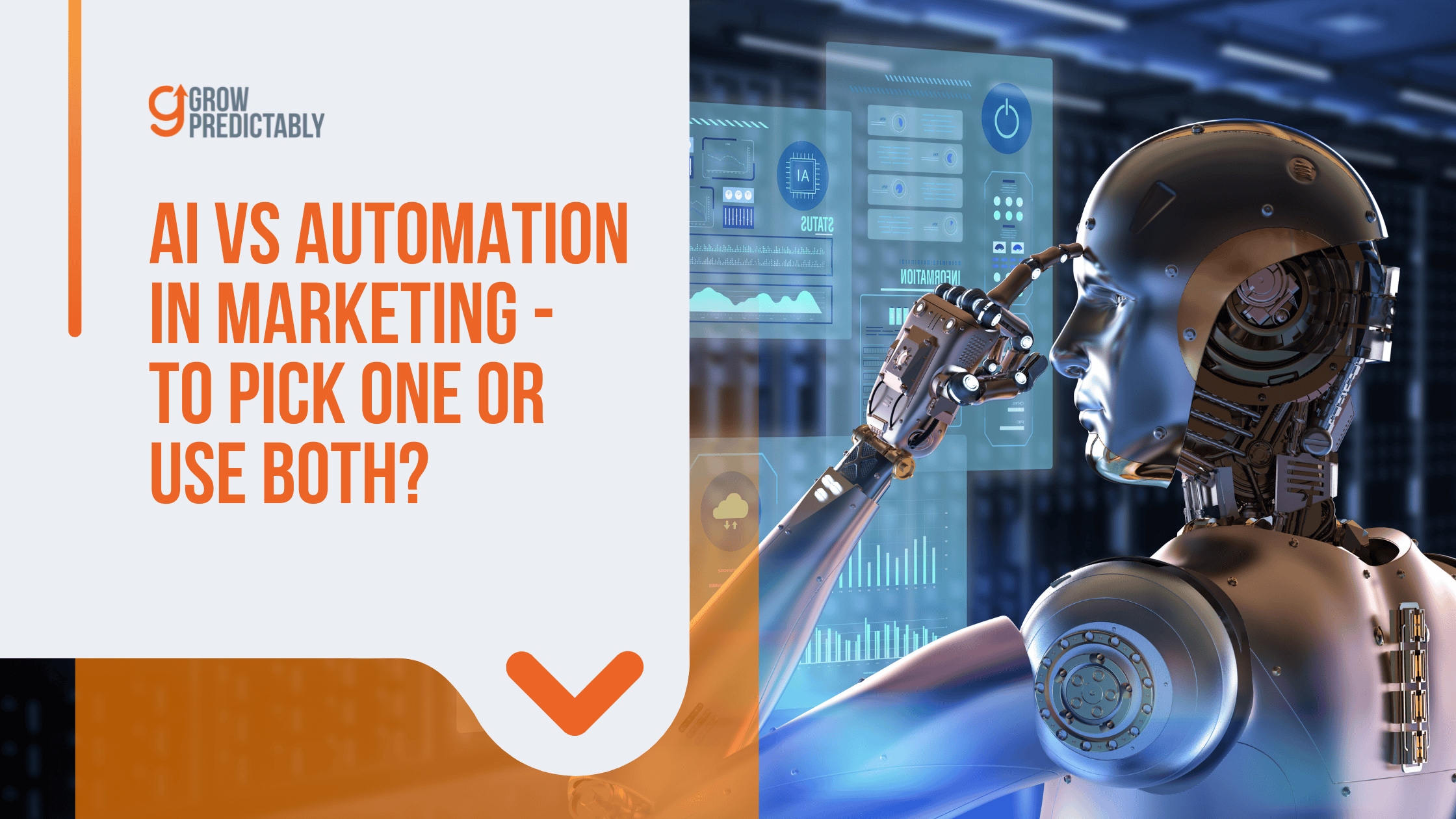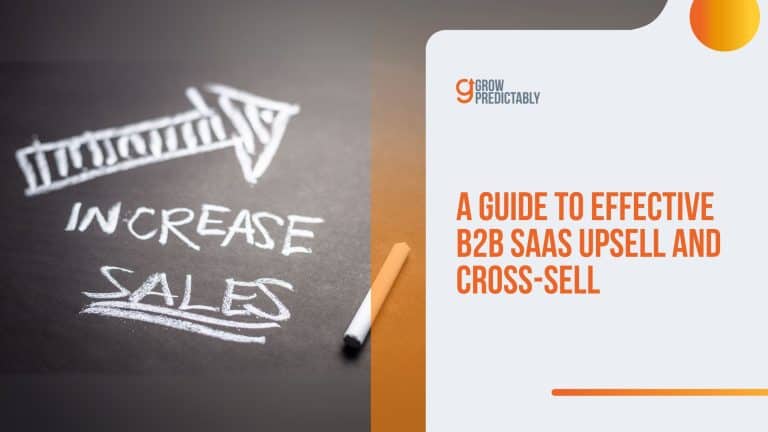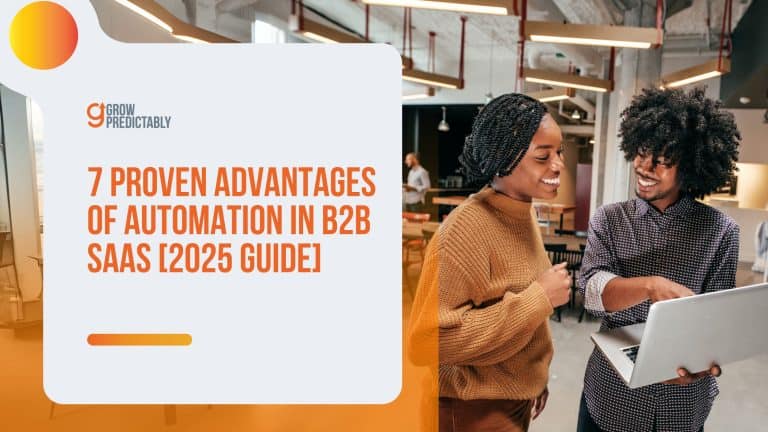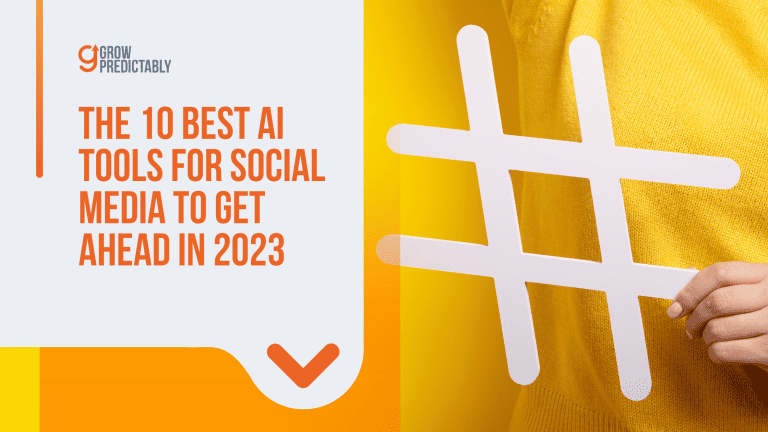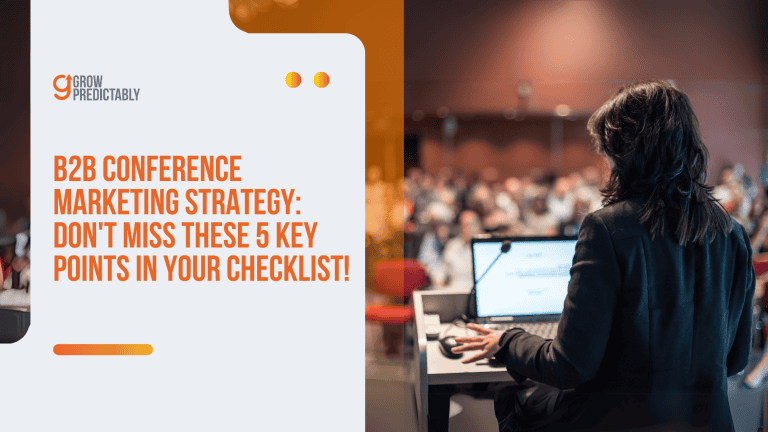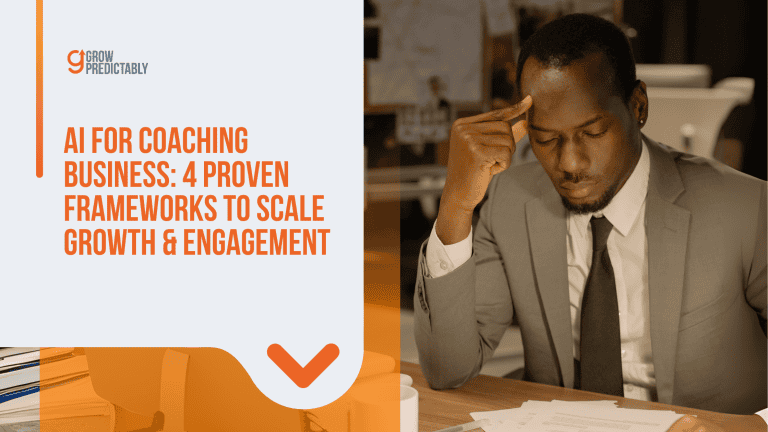AI vs Automation In Marketing – To Pick One or Use Both?
You set up workflows. Emails go out like clockwork. Feels efficient, right?
But something’s off. Engagement flatlines. Conversion stalls. Churn creeps higher.
It turns out that most companies lean too hard into automation and ignore the wildcard of AI.
When it’s about AI vs automation in marketing, is there only room for one?
If you fuse both, your marketing starts making moves on its own—real-time, hyper-targeted, and 10x more relevant.
The two aren’t interchangeable—but they are inseparable if you want a strategy that scales.
Here’s what happens when you stop mistaking motion for intelligence.
YOU CAN’T CHOOSE ONE
Integrating both AI and automation elevates marketing strategies by combining intelligent decision-making with efficient execution.
AI predicts and personalizes customer interactions, while automation streamlines processes for consistent engagement.
Relying on only one limits potential; together, they enhance creativity and operational efficiency, ensuring innovative, responsive campaigns that adapt to market dynamics and customer needs.
Embrace the synergy for maximum impact.
What Is AI and Automation In Marketing?
Have you ever imagined a scenario where your SaaS customer journey could evolve in real time, without human intervention?
Picture watching your marketing adapt and respond to each customer’s needs, like a skilled dance partner who knows the next move before it happens.
Now, let’s break down the two key players here.
What is AI in Marketing?
Think of AI powered solutions as your strategic marketing brain.
It learns from data patterns and predicts what your customers need next.
For example, when someone visits your pricing page three times but hasn’t booked a demo, AI spots this pattern and flags them as a hot lead.
Let’s see what AI brings to your marketing:
- Learns from customer behaviors
- Predicts future actions
- Spot patterns humans might miss
- Makes smart decisions based on data
What is Automation in Marketing?
If AI is the strategist, automation is your reliable executor.
It handles repetitive tasks with perfect consistency.
When a lead signs up for your newsletter, automation kicks in to send welcome emails, schedule follow-ups, and update your CRM—all without you lifting a finger.
Here’s what automation delivers:
- Consistent execution of tasks
- Time-saving workflows
- Reliable follow-ups
- Scalable processes
Working Together Across Your Customer Journey
Here’s where the real impact happens.
Let’s map how AI and automation can work at each stage of the customer’s journey:
➡️ Awareness Stage:
- AI analyzes browsing patterns and customer data to spot serious buyers
- Automation sends tailored content and marketing campaigns based on their interests
➡️ Subscribe Stage:
- AI predicts which lead magnet will convert best
- Automation delivers it instantly and starts nurture sequences
➡️ Convert Stage:
- AI scores are based on behavior patterns
- Automation triggers sales team notifications for hot prospects
➡️ Excite Stage:
- AI spots usage patterns that predict long-term success
- Automation sends targeted training resources
In a gist, this is what AI and automation can do for your marketing efforts at different stages of the funnel.
Basically…
📌 AI transforms decision-making and personalization
📌 Automation scales execution and reduces manual bottlenecks
📌 Together, they shift marketers into strategic leadership roles
But what happens when you combine AI and automation across the entire customer journey?
A transformation that can change your entire business…
From my perspective, AI without automation is just insight without action, and automation without AI is just blind execution.
Key Differences Between AI and Automation

Imagine this scenario.
You’re at the helm of your SaaS company.
Your marketing team comes to you, beaming with pride, showcasing their new automated email sequence.
But here’s the twist.
Most SaaS founders stop at automation, not realizing that AI could completely revolutionize their marketing strategies.
Let’s delve into why this is important by comparing the two:
| Dimension | Artificial Intelligence | Automation |
|---|---|---|
| Core Function | Thinks and learns from data | Follows pre-set rules |
| Adaptability | Changes behavior based on new patterns | Stays consistent until manually updated |
| Complexity | Makes predictions and decisions | Executes defined tasks |
| Example | Predicts which customers might leave based on behavior | Sends welcome emails when someone signs up |
I’ve seen firsthand how confusing these tools can stunt growth in SaaS companies.
One client, for instance, kept automating emails without using AI-driven segmentation.
The result?
Their inbox placement rates plummeted because they weren’t interpreting the signals their customers were sending.
Let’s illustrate this with a real-world scenario:
🔴 Automation Only:
- Sends the same follow-up email to everyone who views the pricing page
- Fixed timing regardless of engagement
- One-size-fits-all messaging
🟢 AI + Automation:
- Analyzes browsing patterns to spot serious buyers
- Adjusts email timing based on peak engagement hours
- Personalizes messages based on feature interest
What’s the difference with the automation and AI powered system?
The AI-enhanced approach typically sees a 25% higher click-through rate because it’s working smarter, not just faster.
How AI and Automation Deliver Value in Real Business Cases
Want to reduce churn by 30% in 60 days?
That’s what smart SaaS companies are doing right now: mixing AI and automation in fresh ways.

Let’s dive into the real wins happening today.
1. AI for Personalization
Imagine having a barista who remembers exactly how you like your coffee, recognizes when you’ve had a rough day, and knows when to suggest trying something new – but for millions of customers simultaneously.
That’s AI personalization in marketing.
Personalization matters because today’s consumers expect brands to understand them.
When marketing feels tailored to individual needs, engagement skyrockets, customers stick around longer, and companies see meaningful revenue growth.
The numbers don’t lie – personalized experiences drive 40% more revenue than generic approaches.
Here’s how businesses implement AI personalization in their processes:
- Behavior analysis: Systems track user interactions across touchpoints to build comprehensive preference profiles
- Predictive content matching: AI algorithms determine which content will resonate with specific segments or individuals
- Dynamic journey orchestration: Marketing systems automatically adjust customer pathways based on real-time signals and historical patterns
- Intelligent timing optimization: Messages arrive precisely when customers are most receptive
Real-world impact is undeniable.
A 2023 case study of a global retailer showed that their implementation of advanced AI personalization technology increased conversion rates by 25% and significantly improved customer experience metrics, including loyalty and engagement. (Source)
Similarly, Sephora’s AI beauty assistant creates personalized product recommendations based on skin type and preferences, resulting in a 20% jump in online sales. (Source)
Even in hospitality, AI-powered personalized recommendations for food, beverages, and activities have measurably elevated guest satisfaction levels across properties in multiple countries. (Source)
2. Automation in Workflow Optimization
If the production line is for building cars, workflow automation is for putting “automatic” to perfectly timed customer communications, data synchronization, and campaign execution.
All that without human intervention or errors.
For marketing teams, automation eliminates repetitive busywork, ensuring consistent execution and enabling them to operate at speeds and volumes impossible with manual processes.
The most significant benefit? Marketers can shift from being task managers to strategic thinkers.
Modern marketing automation works through:
- Trigger-based campaign activation: When customers take specific actions, relevant follow-up sequences automatically deploy
- Cross-platform data synchronization: Customer information updates simultaneously across all connected systems
- Intelligent task routing: Leads and opportunities are directed to appropriate team members based on predefined criteria
- Scheduled content distribution: Marketing materials are deployed across channels at predetermined optimal times
A comprehensive workflow automation case study demonstrated how one company achieved 40% enhanced process efficiency and reduced manual errors by 75% through implementing automation tools. (Source)
Even more impressive, they achieved positive ROI within six months.
Another organization categorized their automation initiatives from small to extremely large-scale operations and found that even basic automation of daily data entry tasks saved 5 hours monthly.
At the same time, more complex implementations delivered 40+ hours of time savings each month. (Source)
3. AI + Automation Together
When AI and automation join forces, it’s like upgrading from a bicycle to a self-driving car.
The system doesn’t just perform tasks faster – it makes intelligent decisions, executes them flawlessly, learns from results, and continuously improves without constant human guidance.
This powerful combination creates marketing operations and business processes that are simultaneously more personalized and more scalable.
The integration manifests in several key ways:
- Intelligent conversation systems: AI chatbots that understand customer intent, provide appropriate responses, and execute follow-up actions automatically
- Adaptive campaign optimization: Marketing sequences that automatically adjust targeting, content, and timing based on performance data
- Predictive outreach: Systems that identify ideal moments to engage customers and automatically deploy the optimal message
- Dynamic resource allocation: Marketing budgets that automatically shift toward the highest-performing channels and campaigns
Drift demonstrates the power of this combination through its conversational marketing platform.
Pairing AI-driven insights with automated responses, AI marketing automation tools like Drift help companies deliver personalized experiences that convert more visitors into qualified leads.
Their system identifies high-intent buyers, scores engagement in real-time, and delivers the right chat experience automatically, resulting in faster pipeline generation and more efficient sales cycles.
Scoring Your Growth
Let’s check how you’re doing:
🔴 Red: Manual processes are eating up time
🟡 Yellow: Some automation but no AI insights
🟢 Green: AI and automation working together
Take Action Today
- Pick one journey stage to improve
- Find one AI insight to track
- Build one automation to respond
Drawing from my knowledge of growth metrics, companies often see the biggest wins in the early journey stages through the implementation of AI algorithms.
Start with welcome sequences – they’re quick to automate and show fast results.
Remember: This isn’t about replacing human touch – it’s about making every interaction count.
Just imagine: while you’re reading this, your systems could be turning insights into actions, growing your business 24/7.
Next up, we’ll explore how these tools can transform your entire customer experience…
How AI + Automation Increased Yum! Brands’ Engagement and Purchases

Now, the world’s leading brands are leading because of how they leverage advanced technology such as AI and automation.
This combination is helping them not only stay in the game but also become real game changers in the market.
In this analysis, we’re going to take a peek at how the parent company of Taco Bell, KFC, and Pizza Hut does that with AI and automation.
Problem
Yum! Brands faced the challenge of delivering personalized marketing at scale.
Traditional methods of customer engagement often fell short in addressing individual preferences and optimizing campaign timing, leading to missed opportunities for boosting sales and customer loyalty.
AI powered marketing automation addresses these gaps, providing personalized and efficient solutions.
Solution
To tackle this, Yum Brands integrated AI-driven technologies into its marketing strategy.
By leveraging machine learning algorithms and automation, the company developed hyper-personalized campaigns tailored to individual customer behaviors.
These campaigns utilized data such as purchase history, browsing habits, and even time-of-day preferences to create highly relevant promotions.
Methodology
Yum Brands employed AI to analyze vast amounts of customer data in real time.
Automated systems then used these insights to craft targeted email promotions and digital advertisements.
For instance, AI identified patterns in customer behavior, such as peak times for ordering, and leveraged predictive analytics and automated the delivery of personalized offers during those windows.
This seamless integration of AI and automation ensured marketing campaigns were not only relevant but also timely.
Results
The experiment yielded impressive outcomes.
Yum Brands reported a significant boost in customer engagement and purchases across its restaurant chains.
The ability to deliver tailored experiences at scale positioned the company as a leader in digital marketing innovation.
This case study underscores the importance of integrating both AI and automation into modern marketing initiatives.
By combining predictive analytics with automated execution through the use of AI marketing automation tools, businesses using AI powered marketing automation can achieve greater efficiency, personalization, and ROI—key factors for staying competitive in today’s fast-evolving market landscape.
Where You Can Use AI, Automation, and Both
“Innovation needs to be part of your culture. Consumers are transforming faster than we are, and if we don’t catch up, we’re in trouble.” says Ian Schafer, CEO of Kindred.
And we couldn’t agree more. But where do you start?
AI and automation can have multiple beneficial use cases in business, even outside marketing.
Here are several examples of how you can make the best use of AI and automation in your business.
AI in marketing
- Use AI to analyze customer data and behaviors to create precise market segments.
- Implement AI to predict future buying behaviors and customer lifetime value.
- Utilize AI to recommend products or content based on individual user preferences.
- Deploy AI-powered chatbots to provide real-time customer support and answer queries.
- Use AI to monitor and analyze customer sentiment on social media and online reviews.
- Employ AI to refine ad targeting based on user interactions and preferences.
- Implement AI tools to generate content ideas and craft personalized messaging.
Automation in marketing
- Use automation to schedule and send customized email sequences based on triggers.
- Automate the scheduling and posting of content across social media platforms.
- Automate the process of following up with leads through drip campaigns and follow-up sequences.
- Automate the updating and maintenance of customer relationship management systems.
- Use automation to handle registrations, reminders, and follow-ups for webinars.
- Automate the distribution and collection of feedback through surveys.
- Automate the entry of marketing data and generation of reports to streamline operations.
Where AI can meet automation
- Use AI to predict optimal pricing and automate price adjustments in real-time.
- Implement AI to score leads on behavior and automate the routing to sales teams for follow-up.
- Combine AI to analyze test outcomes and automate variants for faster iteration.
- Use AI to identify at-risk customers and automate loyalty campaign triggers.
- Deploy AI to craft personalized experiences across channels, automated for real-time engagement.
- Use AI when you need to:
- Spot patterns in customer behavior
- Make predictions about future actions
- Learn and adapt from results
- Use automation when you need to:
- Scale repetitive tasks reliably
- Execute consistent workflows
- Save time on routine processes
- Combine them when you want to:
- Create self-improving marketing systems
- Scale personalization effectively
- Reduce customer acquisition costs
From my experience in digital analytics, I’ve learned that tracking the right metrics is crucial.
When companies properly integrate AI with automation, they often see their customer acquisition cost (CAC) drop by 20-30% because they’re targeting more effectively.
But here’s the million-dollar question: Is your marketing strategy ready to leverage the competitive advantage of both AI and automation?
While your team might be focusing on basic automation, your competitors could be developing predictive engines that understand and react to customer behavior in real-time.
Integrating AI and Automation for Enhanced Efficiency
What if your marketing campaigns could adapt in real time based on customer sentiment, without touching a button?
This isn’t science fiction anymore.
Let me show you how to make it happen.
I’ve spent countless hours testing AI and automation combinations, and here’s what works:
1. Start with AI-Powered Analysis
Your first step is letting AI dig through your data to spot patterns humans might miss.
Think of AI as your data detective:
- Use Salesforce Einstein to predict which customers need attention
- Let Tableau AI find hidden connections in your usage data
- Use predictive analytics to watch for early warning signs of customer churn through behavior patterns
Pro tip: Start small.
Pick one metric to track, like feature usage, before expanding.
2. Connect AI Insights to Action
This is where the magic happens.
When AI spots something important, automation jumps into action:
- Set up Zapier to push AI findings straight to your CRM
- Create HubSpot workflows that trigger based on AI signals
- Use Customer.io to send perfectly timed messages
Here’s a real example: When AI marketing automation tools detect dropping usage rates, automation kicks in with targeted help resources and check-in emails.
3. Build Your Integration Flow
Picture this workflow:
- AI scores customer intent (high, medium, low)
- Automation routes leads to different nurture paths
- Hot prospects get fast-tracked to sales
- Cold leads receive educational content
4. Watch Out for These Pitfalls
I learned these the hard way:
- Data silos kill efficiency – make sure your tools talk to each other
- GDPR compliance matters – map your data flows carefully
- Too much automation can feel robotic – keep the human touch
Growth Score Check-In
Rate your progress using these indicators:
🟢 Green: AI and automation working together smoothly
🟡 Yellow: Some manual steps still needed
🔴 Red: Disconnected systems or data gaps
Monitor these metrics weekly.
When you spot yellow scores, especially in conversion stages, that’s your signal to fine-tune your automation timing or AI parameters.
Integration is where true scale begins.
Once real-time insight connects with real-time action in marketing campaigns, efficiency becomes exponential
The key is starting small, measuring results, and expanding what works.
Remember: Your goal isn’t just to automate—it’s to create smarter, more responsive marketing that grows with your business.
Challenges When Implementing AI and Automation
Leveraging AI and automation in your business can accelerate business growth and set you apart from the competition.
However, this also depends on how you implement the two.
Knowing how to implement AI and automation is one thing, but knowing how to do it right is what’s more important.
Here are the common challenges you’ll need to be keen about during the implementation period.
Data Quality:
- Garbage in = garbage out
- Track your data accuracy weekly using red-yellow-green scores
- Clean your CRM data monthly (not yearly)
Ethical AI:
- The EU AI Act sets strict rules about AI transparency
- Document every AI decision point in your marketing
- Build trust through clear communication about AI use
Human Oversight:
- Don’t let automation run wild
- Keep humans in charge of strategy
- Review AI outputs before they go live
Your Growth Scorecard Action Items
📊 Weekly Tracking:
- Content performance by AI vs. human creation
- Customer sentiment toward AI interactions
- Response rates to AI-generated communications
🚦 Red-Yellow-Green Monitoring:
- Red: Data quality below 85% accuracy
- Yellow: Mixed customer feedback on AI touchpoints
- Green: Successful AI/human collaboration metrics
To future-proof your SaaS growth, invest in agility—track, test, and pivot.
Because the companies that master ethical AI today will dominate markets tomorrow.
Start with one clear metric per journey stage.
When I helped a client track AI content performance, we found sweet spots where AI draft + human polish doubled engagement.
Remember: The future isn’t about AI replacing humans—it’s about AI empowering humans to create extraordinary customer experiences.
Your move.
FAQs
Smart Scaling Begins with Strategic Integration
Here’s what we’ve learned: AI gives you the foresight to predict customer behavior, and automation gives you the power to respond at speed.
Together, they unlock a new level of marketing intelligence that manual efforts simply can’t match.
This isn’t about replacing your team—it’s about empowering them to focus on high-value strategy while tech handles the grind.
That’s the kind of shift that doesn’t just increase revenue—it improves morale, retention, and long-term brand value.
Take the next step today: Revisit your CRM workflows and ask—”What’s still manual that could be automated intelligently?”
Need support?
Our curated resources can walk you through AI content tools, GDPR compliance, and choosing the right triggers for automation.
So here’s something for your next planning session: Where can you double your impact by integrating AI insights with existing automation?
In a world where customer expectations grow daily, real-time personalization isn’t a luxury—it’s a necessity.
And now, you have the playbook to act.

